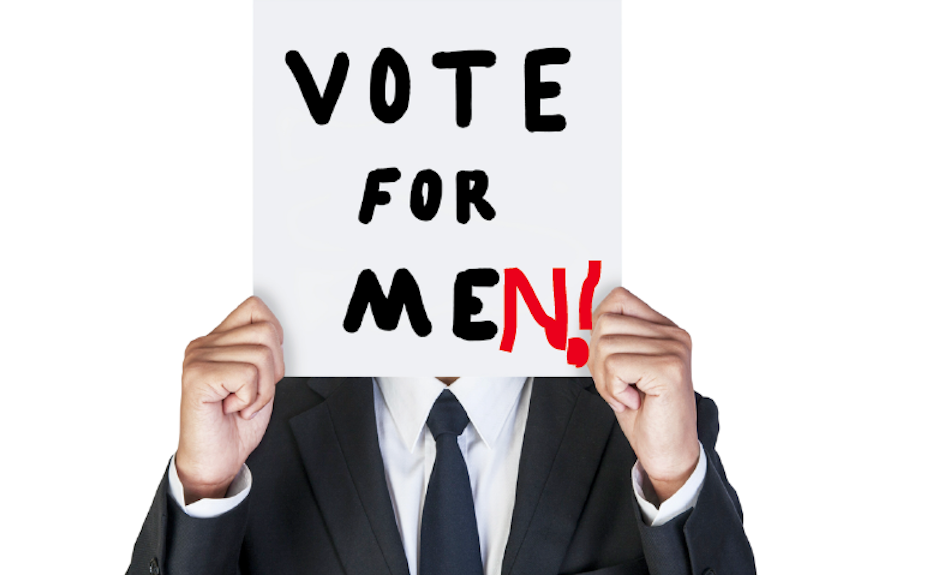It is nearly 100 years since the first woman was elected to the UK parliament. Constance Marckievicz, a suffragette and socialist, won the seat of Dublin St Patrick’s for Sinn Fein in December 1918. She later became one of the first women in the world to hold a cabinet position as minister for labour in the newly seceded Irish Republic between 1919 and 1922.
These days, however, the UK is ranked 56th in the world for women’s representation in politics. It is beaten not just by the likes of Norway, Denmark and Iceland, but also Iraq, Afghanistan, Mozambique and Algeria.
When it comes to gender balance in politics, some parts of the UK have a better record than others – the devolution settlement to Scotland in 1999 opened up a new space for women’s political representation in the UK and women’s participation in Holyrood has always been higher than Westminster.
At the moment the Scottish parliament has 45 women among its 129 MSPs (35%) compared to Westminster which has 147 women out of 650 MPs (23%). The Scottish National Party (SNP) and Scottish Labour are the main drivers of this statistic, with 17 and 18 women MSPs respectively.
The position of women in power shows a wider disparity. Scottish first minister, Nicola Sturgeon, recently introduced a 50/50 gender-balanced cabinet, with five women from ten posts. Among junior ministers, it’s six women out of 14 or 43% (prior to Sturgeon’s arrival it was four from 11 in the cabinet and five from 13 at junior level). The coalition at Westminster currently has five women cabinet ministers out of 22, which is 23% (before last July it was four from 22, or 18%).

The upcoming election
One reason for the relatively high support for the Yes vote in Scotland’s independence referendum was the mobilisation of women’s groups such as Women for Independence. Yet that grassroots political activism has yet to translate into political participation. Only 28% of Scottish candidates in the forthcoming general election are women (17% of Conservatives, 26% of Labour, 27% of Liberal Democrats, 36% of SNP and 42% of Greens).
The SNP has no positive measures in place as yet to increase women’s participation, although the growth in its membership has come more from women than men (at the time of the referendum it was 33% female and this has now risen to 44%).
In Scotland there is a campaign led by Labour and the Greens for all political parties to aim for 50/50 representation. It is opposed by the Conservatives and not officially supported by the SNP or Liberal Democrats.
At the UK level, none of the parties support positive measures such as quotas to encourage women’s political participation. Overall, Labour is fielding the largest number of women candidates (212 – 34%), though is still behind the SNP’s 36% proportionally.
The Greens are fielding 176 women candidates which puts them at the highest percentage (37%), with Liberal Democrats (212 – 34%), Plaid Cymru (10 – 26%) and the Conservatives (152 – 25%) all a few points behind. Only UKIP fails to approach the 25% mark, fielding only 65 (13%) women candidates.
Women candidates in Election 2015 by %

Of course many political parties are bound to return incumbent candidates, so it is difficult to overturn a historical bias towards male candidates. But of the “new” candidates standing for election in non-Scottish constituencies, only the Labour party is approaching 50%.
The reasons behind the difference
Why is Westminster lagging behind when it comes to women representatives? One reason may that there are more high-profile women in the Scottish parliament. Not only is the first minister a woman, Ruth Davidson is leader of the Scottish Conservatives and Kezia Dugdale is deputy leader of Scottish Labour. Women in these kinds of roles attract and mentor other female politicians, which is a demonstrated way of getting more women into parliament. In Westminster, by contrast, the leaders of all three main parties are male – and two went to top public schools.
Westminster historically also has a much more adversarial reputation and rigid party structure than Holyrood. This may make it difficult for non-elites generally, and women in particular, to break in. By contrast, Holyrood’s proportional representation has meant a broader spread of representative parties. A parliamentary system built to return coalition governments and consensus-building rather than adversarial politics can support women’s increased political participation.
Women are also more likely to stand for election in local government. It is perceived to be less of a “step up” from serving as a councillor to an MSP than an MP. So we may well see greater numbers of women entering the Scottish parliament in 2016 than Westminster in May.
Even so, women entering politics face difficult decisions about balancing caring commitments with holding elected office. It is notable that many of the countries with gender equality in elected members of parliament are countries which have equality built into legislation covering all sections of society – examples would include Norway, Iceland, Sweden, Denmark, Rwanda and Estonia.
They tend to have substantial investment in universal childcare and long-term care services, universal welfare, high numbers of women in employment and strong legislation on equal pay and maternity benefits. These conditions are not part of the social or political landscape of the UK and are unlikely to be in the near future.
It is probably also no coincidence that it is the “fringe” parties led by women – SNP, Plaid Cymru and the Greens – that are offering policy alternatives to the right-wing consensus on austerity and welfare sanctions. If so, keeping women (and other non-elites) out of politics also keeps alternative policy options limited and offers voters fewer real choices at the ballot box.
Constance and her fellow suffragettes would not be overly impressed. If we are going to see increased numbers of women in politics, radical changes are clearly needed.

